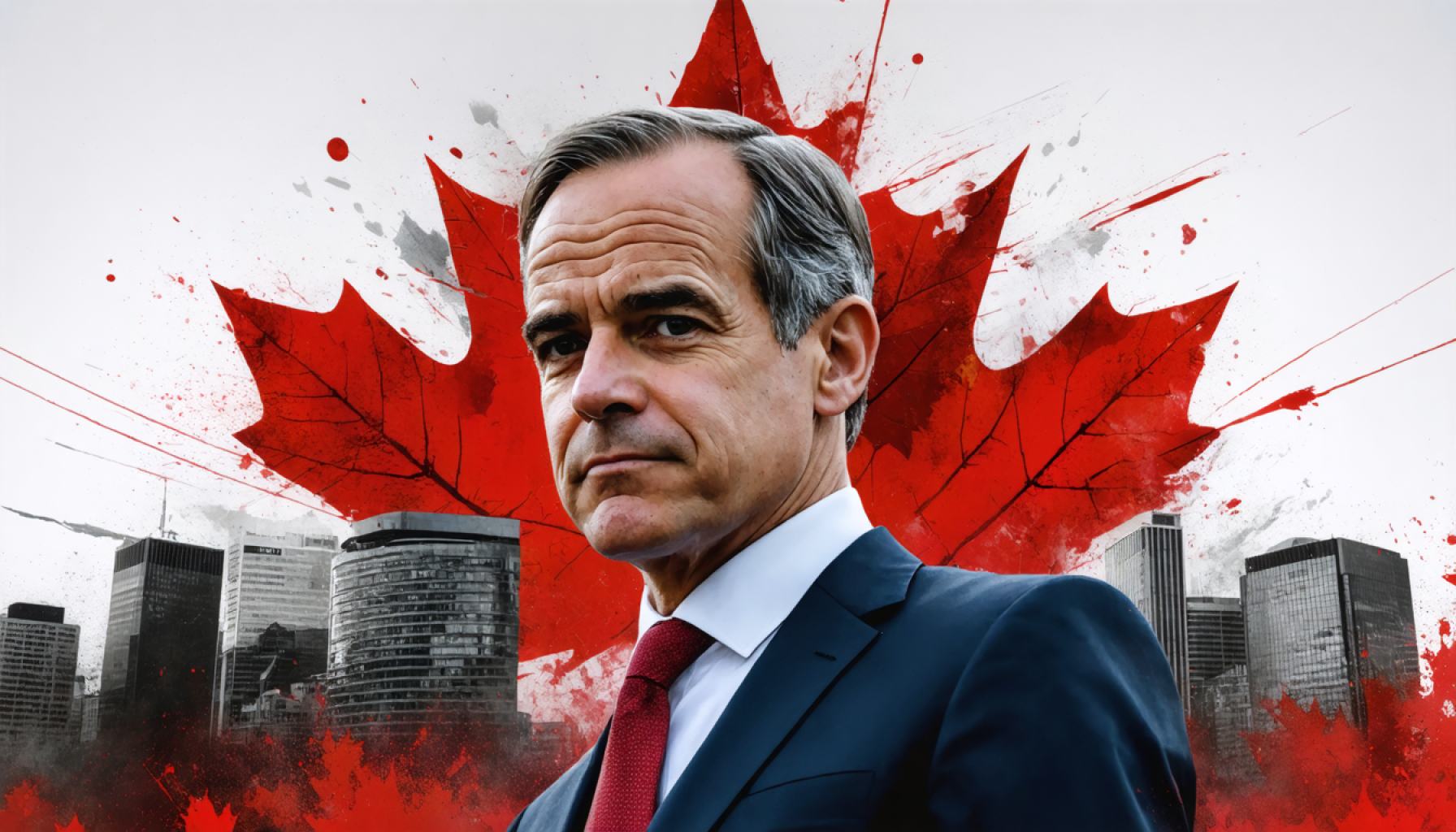- Mark Carney leads Canada’s new government, ousting Conservative leader Pierre Poilievre and securing a Liberal minority government with approximately 162 seats.
- Political dynamics are shaped by strained U.S.-Canada relations, with Carney seen as more capable of managing diplomatic challenges than Poilievre.
- Poilievre’s crypto-centric campaign, though bold, was overshadowed by national issues and lacked sufficient voter resonance.
- Carney’s diplomatic approach to tech growth, without strong crypto policy stances, aligned with voter priorities for stability.
- The Liberal Party must forge alliances with other parties like the Bloc Quebecois or the New Democratic Party to strengthen their parliamentary position.
- Carney faces the challenge of repairing U.S. trade relations and ensuring Canada’s economic resilience amid global changes.
- This election underscores Canadian voters’ preference for experienced, steady governance amidst international and technological uncertainties.
In a stunning political twist, Mark Carney has emerged victorious, seizing the reins of Canada’s government from Conservative leader and crypto-enthusiast Pierre Poilievre. Once considered a frontrunner, Poilievre now faces the reality of not only losing the race for Prime Minister but also his own parliamentary seat.
Under Carney’s leadership, the Liberal Party clinched around 162 seats, setting the stage for a minority government, according to Elections Canada. Despite this victory, discussions are rampant regarding whether the Liberals can harness enough support from other parties to command a more secure majority position in Parliament.
The election’s backdrop was notably influenced by the shadow of strained relations with the United States, a tension exacerbated by aggressive trade tariffs imposed by President Donald Trump. Many Canadians felt that Carney was better equipped to manage these diplomatic challenges, as surveys showed a majority favoring his approach to international trade disputes over Poilievre’s Trump-inspired tactics.
It was Poilievre’s close ties to cryptocurrency—a topic that has dominated U.S. political debates but held less sway in this Canadian election—that added a layer of intrigue to his campaign. With bold promises to propel Canada into a blockchain hub and staunch opposition to central bank digital currencies, Poilievre attempted to rally crypto supporters to his cause. Yet, this issue took a backseat, overshadowed by more pressing national concerns.
While Carney, an experienced former central banker, pivoted away from direct crypto engagement, he endorsed the broader growth of tech and digital industries without committing to specific cryptocurrency policies. This nuanced stance likely resonated with voters more concerned with economic and diplomatic stability than blockchain advancements.
The Liberal Party’s path forward depends heavily on possible alliances with the Bloc Quebecois or the New Democratic Party to effectively govern. Meanwhile, Carney’s leadership will be tested as he works to restore and enhance Canada’s trade relationship with the United States while ensuring the nation’s economic resilience in a rapidly evolving global landscape.
As Canadians digest these surprising electoral outcomes, one takeaway is clear: even in the face of disruptive technologies and volatile international politics, voters seem to have chosen a steady, experienced hand to guide the country’s future.
Surprising Strategic Shifts: How Carney’s Liberal Victory Redefines Canada’s Political Landscape
In an unexpected political shift, Mark Carney’s victory over Conservative leader Pierre Poilievre marks a significant change in Canada’s political direction. This victory not only means a change in leadership but also sets the stage for new economic and foreign policy strategies. Despite not having a clear majority, Carney’s Liberals, with 162 seats, must now skillfully navigate alliances to secure a governing majority. Here’s a deeper dive into this election’s implications and what Canadians—and the world—can expect going forward.
Economic Strategies and Tech Policy
One of the key aspects of Carney’s leadership is his nuanced approach to technology, particularly around cryptocurrency. While Poilievre strongly embraced cryptocurrency, positioning Canada as a future blockchain hub, Carney took a more balanced view. As a former central banker, Carney concentrated on enhancing the nation’s overall tech sector without focusing exclusively on digital currencies.
Carney’s position reflects a broader strategy of fostering tech growth while ensuring economic stability. This resonates well with the majority of Canadians, who appear more concerned with substantive economic growth and stability rather than speculative crypto investments. His approach could lead to increased investments in digital infrastructure and innovation, aligned with Canada’s goals of maintaining robust economic health.
Trade Relations and Diplomatic Efforts
Carney’s previous experience as a central banker has equipped him with the skills needed to address the strained U.S.-Canada relations exacerbated during Trump’s presidency. Many Canadians believe Carney’s diplomatic skills make him well-suited to manage complex trade negotiations, potentially leading to improved bilateral relations and economic cooperation.
Navigating trade tensions will be a central theme of Carney’s administration, particularly in restoring favorable trade terms with key partners. Strategies might include strengthening multilateral institutions and leveraging international trade agreements to bolster Canada’s economic interests.
Coalition Building for Governance
The Liberal Party, lacking a definite majority, faces the challenge of forming coalitions with other political entities like the Bloc Quebecois or the New Democratic Party. Their ability to effectively partner will significantly impact the legislative success of Carney’s government.
Each potential coalition partner brings unique priorities—for instance, the Bloc Quebecois often focuses on Quebec’s interests, while the NDP advocates for progressive policies. These alliances can shape the policy directions on healthcare, environmental issues, and economic equality, requiring careful negotiation and compromise.
Pressing Questions on Crypto and Policy
Will Carney’s nuanced stance affect Canada’s blockchain industry?
While Poilievre’s focus was on turning Canada into a blockchain leader, Carney’s broader tech industry approach may see indirect benefits to the blockchain sector alongside other digital advancements. The focus will likely be on sustainable growth and integration rather than rapid expansion.
How will this election impact Canada’s international reputation?
With Carney’s leadership prioritizing experienced diplomacy and stable economic policies, Canada could reinforce its reputation as a reliable and stable ally on the global stage. This shift may attract international investments and strengthen geopolitical partnerships.
Actionable Recommendations
– Stay Informed: Canadians should stay updated on coalition developments and potential policy shifts, as these will significantly influence national strategies and local economies.
– Engage in Political Discourse: Actively engaging with your representatives and participating in community forums can ensure that diverse perspectives are represented in coalition discussions.
– Diversify Investments: In light of shifting tech policies, consider diversifying investments across stable technology sectors, balancing risk with emerging opportunities.
For further insights, visit The Globe and Mail or National Post for comprehensive coverage of Canadian politics and economic trends.
As Mark Carney steps into his new role, his administration’s strength will lie in its ability to balance innovation with stability, leveraging Canada’s robust economic foundations while adapting to global shifts.











